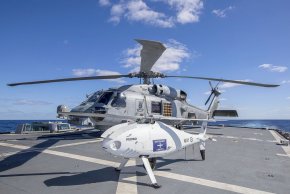I could be mistaken, but I believe the displacement reduction which would happen by removing the 'A' position 127 mm gun and replacing it with another Mk 41 or some other type VLS in the same location would actually exacerbate displacement issues. My reasoning behind this is that IIRC concrete ballast had to be added to spaces in the hull, to counteract increases in topweight brought about by quad-packing the ESSM, adding the Harpoon AShM quad-launchers, plus the new masts, CEAFAR radar panels and their associated ancillary kit. By reducing the displacement low down flush with Deck 1, that would cause the CoG to rise, triggering a need for more ballasting to be done. In some respects, it might be easier (and lead to a better outcome) if some of the planned Arafura-class OPV's were built with a greater combat focus and were fitted with a Mk 41 VLS, and the necessary illuminators and other bits and bobs. Another possibility to increase the air defence loadout options for RAN vessels was if the RAN were to adopt another missile in addition to the ones already in service or planned, namely adding Sea Ceptor into the mix.

